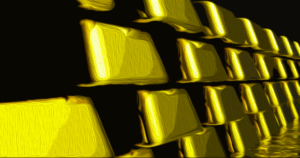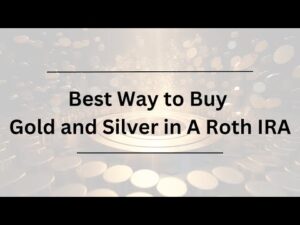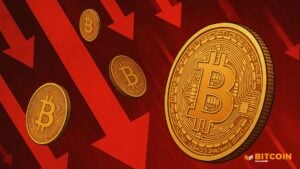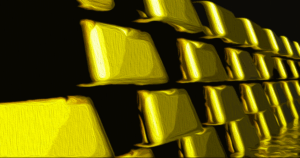Spot Bitcoin ETFs Gear Up for Fierce Competition With Low Fees, Teaser Rates, and More
Leading up to the SEC approval deadline, spot Bitcoin ETFs, including industry giants Blackrock and Fidelity, began disclosing competitive fee structures, signaling the intensifying race to attract investors.
Blackrock's Aggressive Fee Cuts
Blackrock, in its Jan. 8 S-1 filing, announced a 0.2% fee for its initial $5 billion assets in the first year, rising to 0.3% thereafter. This aggressive fee cut aims to entice investors and secure a strong market position.
Fidelity's Competitive Fee Structure
Fidelity, another major player in the spot Bitcoin ETF market, opted for a slightly higher fee of 0.39%. While not as low as Blackrock's fee, Fidelity's competitive pricing strategy demonstrates their commitment to attract investors.
Bitwise's Innovative Approach
Bitwise, which first filed for a spot Bitcoin ETF five years ago, stands out with the lowest normal fee among the current group of ETFs at 0.24%. However, their unique selling point goes beyond low fees. Bitwise recently announced that they will contribute 10% of the Bitwise Bitcoin ETF's profits to support Bitcoin open-source development. This philanthropic approach distinguishes Bitwise from its competitors and appeals to investors who prioritize the growth and advancement of Bitcoin.
Teaser Rates and Aggressive Strategies
Invesco/Galaxy and ARK, along with its custodian 21Shares, are adopting aggressive strategies to attract investors. Invesco/Galaxy announced a deal to charge 0% for the first $5 billion for six months, followed by a regular fee of 0.59%. Similarly, ARK and 21Shares are offering a 0% fee for the first six months or until it reaches $1 billion in assets, with its regular fee rising to 0.25%. These teaser rates indicate the high stakes in the spot Bitcoin ETF market, where early advantages could determine long-term market dominance.
Grayscale's Unique Positioning
Grayscale, known for its Bitcoin trust (GBTC), plans to convert it into an ETF. However, Grayscale's planned 1.5% annual fee is higher than its competitors, even with a reduction from its current 2%. This positioning relies on Grayscale's volume and liquidity, which may appeal to certain investors despite the competitive fee landscape.
Experts' Perspectives
Experts in the field, such as Nate Geraci of The ETF Store and James Seyffart at Bloomberg, view these fee cuts and strategies as a victory for investors. Geraci emphasizes the benefits for investors with fees below the 40 basis points threshold. Seyffart predicts that the fee war may extend beyond just the ETFs, leading to tighter bid-ask spreads and commission-free trading.
Bitwise's Philanthropic Edge
While most ETFs focus solely on fee competition, Bitwise's commitment to supporting Bitcoin open-source development sets them apart. This strategy appeals to individuals who value Bitcoin as an important asset and supports the growth of the Bitcoin ecosystem. However, it remains to be seen whether traditional finance investors will be swayed by this approach or opt for more familiar names like Blackrock and Fidelity.
In conclusion, the spot Bitcoin ETF market is witnessing fierce competition, with financial giants like Blackrock and Invesco/Galaxy waging a fee war. Bitwise, on the other hand, charts a unique path by offering low fees and contributing to Bitcoin open-source development. Investors have a range of options to choose from, each with its own advantages and selling points. The decision to invest ultimately depends on individual preferences and priorities.
Frequently Asked Questions
Can I buy Gold with my Self-Directed IRA?
Although you can buy gold using your self-directed IRA account, you will need to open an account at a brokerage like TD Ameritrade. Transfer funds from an existing retirement account are also possible.
The IRS allows individuals to contribute as high as $5,500 ($6,500 if they are married and jointly) to a traditional IRA. Individuals can contribute up to $1,000 annually ($2,000 if married and filing jointly) directly to a Roth IRA.
If you do decide you want to invest your money in gold, you should look into purchasing physical bullion instead of futures contracts. Futures contract are financial instruments that depend on the gold price. These financial instruments allow you to speculate about future prices without actually owning the metal. Physical bullion, however, is real gold and silver bars that you can hold in your hand.
How much are gold IRA fees?
Six dollars per month is the fee for an Individual Retirement Account (IRA). This includes the account maintenance fees and any investment costs associated with your chosen investments.
To diversify your portfolio you might need to pay additional charges. The fees you pay will vary depending on the type of IRA that you choose. Some companies offer free checking accounts, but charge monthly fees to open IRA accounts.
A majority of providers also charge annual administration fees. These fees vary from 0% to 11%. The average rate per year is.25%. These rates can often be waived if a broker, such as TD Ameritrade, is involved.
Are You Ready to Invest in Gold?
This will depend on how much money and whether you were able to invest in gold at the time that you started saving. You can invest in both options if you aren't sure which option is best for you.
You can earn potential returns on your investment of gold. Retirement investors will find gold a worthy investment.
While most investments offer fixed rates of return, gold tends to fluctuate. This causes its value to fluctuate over time.
But this doesn't mean you shouldn't invest in gold. Instead, it just means you should factor the fluctuations into your overall portfolio.
Another advantage of gold is its tangible nature. Gold is more convenient than bonds or stocks because it can be stored easily. It is also easily portable.
You can always access your gold as long as it is kept safe. There are no storage charges for holding physical gold.
Investing in gold can help protect against inflation. Because gold prices tend to rise along with other commodities, it's a good way to hedge against rising costs.
Additionally, it will be a benefit to have some of your savings invested into something that won't lose value. When the stock market drops, gold usually rises instead.
Another advantage to investing in gold is the ability to sell it whenever you wish. You can also liquidate your gold position at any time you need cash, just like stocks. You don't even need to wait for your retirement.
If you do decide to invest in gold, make sure to diversify your holdings. Don't place all your eggs in the same basket.
You shouldn't buy too little at once. Start with just a few drops. Next, add more as required.
Keep in mind that the goal is not to quickly become wealthy. Rather, it's to build up enough wealth so you won't need to rely on Social Security benefits.
Even though gold is not the best investment, it could be an excellent addition to any retirement plan.
Is buying gold a good retirement plan?
Although it may not look appealing at first, buying gold for investment is worth considering when you consider the global average gold consumption per year.
Physical bullion is the most popular method of investing in gold. You can also invest in gold in other ways. It is best to research all options and make informed decisions based on your goals.
For example, purchasing shares of companies that extract gold or mining equipment might be a better option if you aren't looking for a safe place to store your wealth. Owning gold stocks should work well if you need cash flow from your investment.
You also can put your money into exchange-traded funds (ETFs), which essentially give you exposure to the price of gold by holding gold-related securities instead of actual gold. These ETFs may include stocks that are owned by gold miners or precious metals refining companies as well as commodity trading firms.
How much gold should you have in your portfolio?
The amount that you want to invest will dictate how much money it takes. For a small start, $5k to $10k is a good range. You could then rent out desks and office space as your business grows. Renting out desks and other equipment is a great way to save money on rent. It's only one monthly payment.
It's also important to determine what type business you'll run. In my case, I am running a website creation company, so we charge clients around $1000-2000/month depending on what they order. This is why you should consider what you expect from each client if you're doing this kind of thing.
As freelance work requires you to be paid freelancers, your monthly salary won't be as high as mine. You might get paid only once every six months.
So you need to decide what kind of income you want to generate before you know how much gold you will need.
I suggest starting with $1k-2k gold and building from there.
What is a Precious Metal IRA?
You can diversify your retirement savings by investing in precious metal IRAs. This allows you to invest in gold, silver and platinum as well as iridium, osmium and other rare metals. These rare metals are often called “precious” as they are very difficult to find and highly valuable. They make excellent investments for your money and help you protect your future from inflation and economic instability.
Precious metals are often referred to as “bullion.” Bullion refers to the actual physical metal itself.
Bullion can be bought through many channels, including online retailers, large coins dealers, and some grocery shops.
An IRA for precious metals allows you to directly invest in bullion instead of purchasing stock shares. This will ensure that you receive annual dividends.
Precious Metal IRAs don’t require paperwork nor have annual fees. Instead, you only pay a small percentage on your gains. Plus, you can access your funds whenever you like.
Can I have a gold ETF in a Roth IRA
Although a 401k plan might not provide this option, you should still consider other options like an Individual Retirement Account (IRA).
A traditional IRA allows for contributions from both employer and employee. You can also invest in publicly traded businesses by creating an Employee Stock Ownership Plan (ESOP).
An ESOP offers tax benefits because employees can share in the company stock and any profits that it generates. The tax rate on money that is invested in an ESOP is lower than if it was held in the employees' hands.
A Individual Retirement Annuity (IRA), is also available. An IRA allows for you to make regular income payments during your life. Contributions to IRAs don't have to be taxable
Statistics
- Indeed, several financial advisers interviewed for this article suggest you invest 5 to 15 percent of your portfolio in gold, just in case. (aarp.org)
- Instead, the economy improved, stocks rebounded, and gold plunged, losing 28 percent of its value in 2013. (aarp.org)
- If you take distributions before hitting 59.5, you'll owe a 10% penalty on the amount withdrawn. (lendedu.com)
- This is a 15% margin that has shown no stable direction of growth but fluctuates seemingly at random. (smartasset.com)
- Contribution limits$6,000 (49 and under) $7,000 (50 and up)$6,000 (49 and under) $7,000 (50 and up)$58,000 or 25% of your annual compensation (whichever is smaller) (lendedu.com)
External Links
finance.yahoo.com
wsj.com
- Saddam Hussein's InvasionHelped Uncage a Bear in 1990 – WSJ
- Do you want to keep your IRA gold at home? It's Not Exactly Lawful – WSJ
















